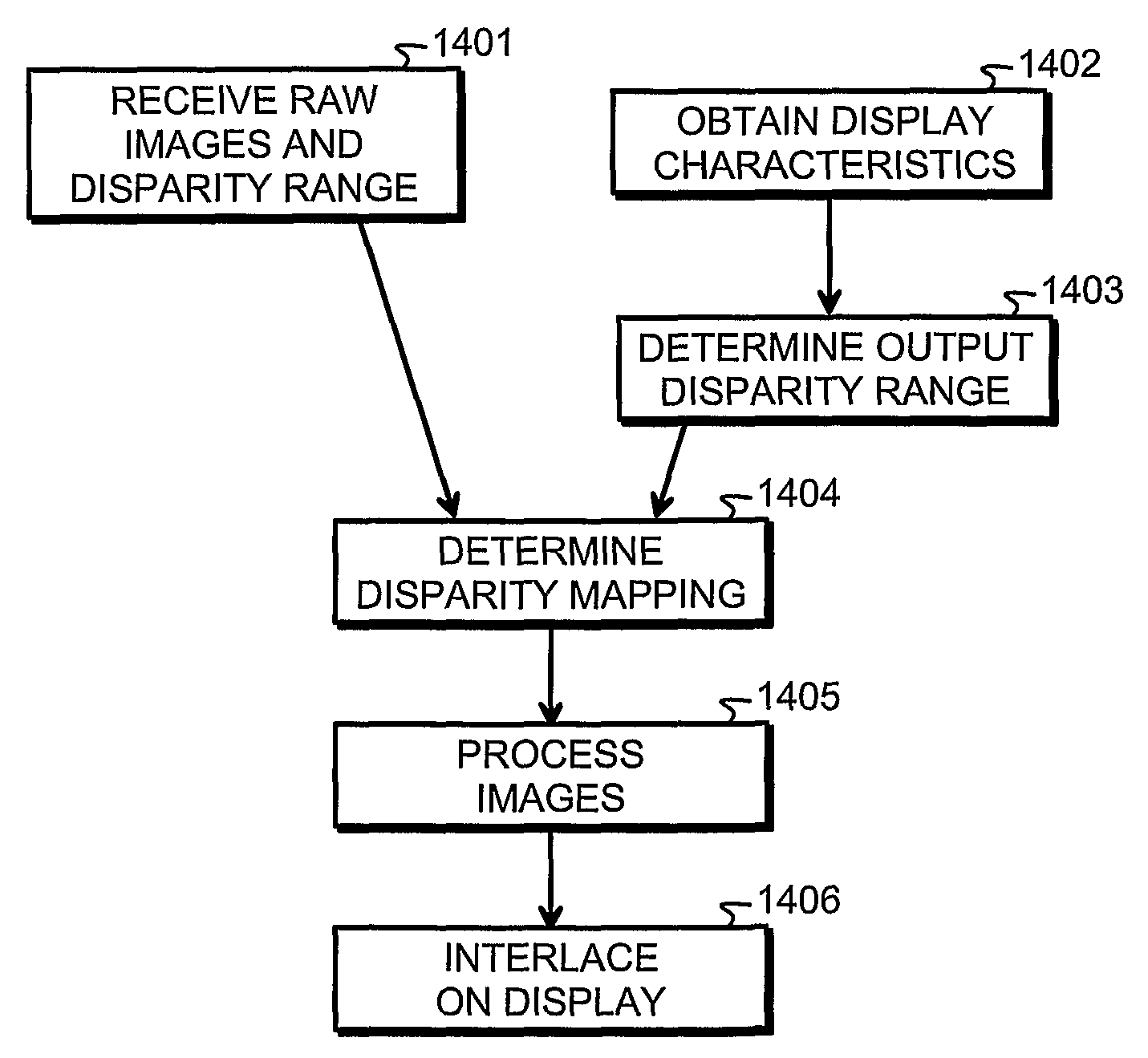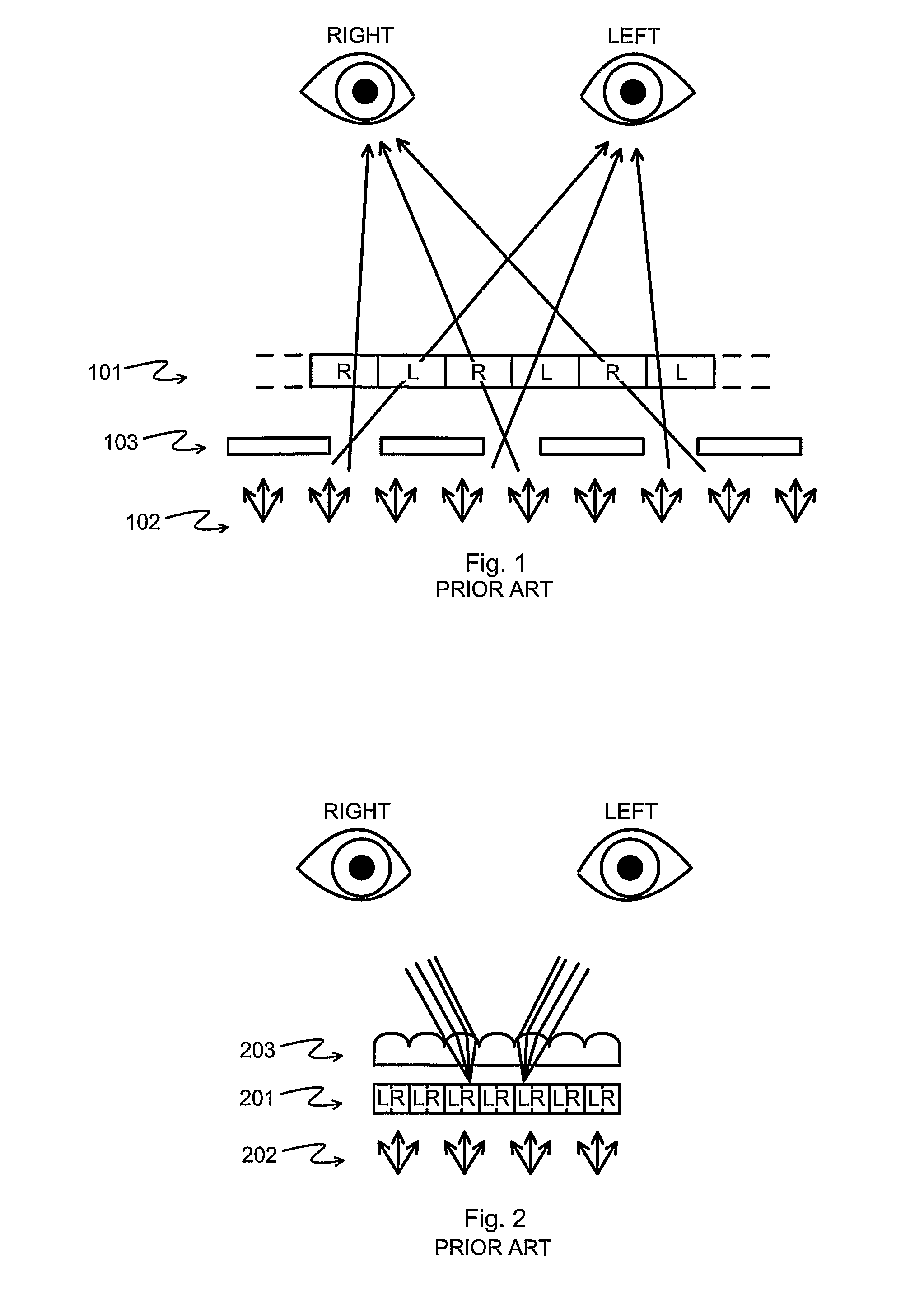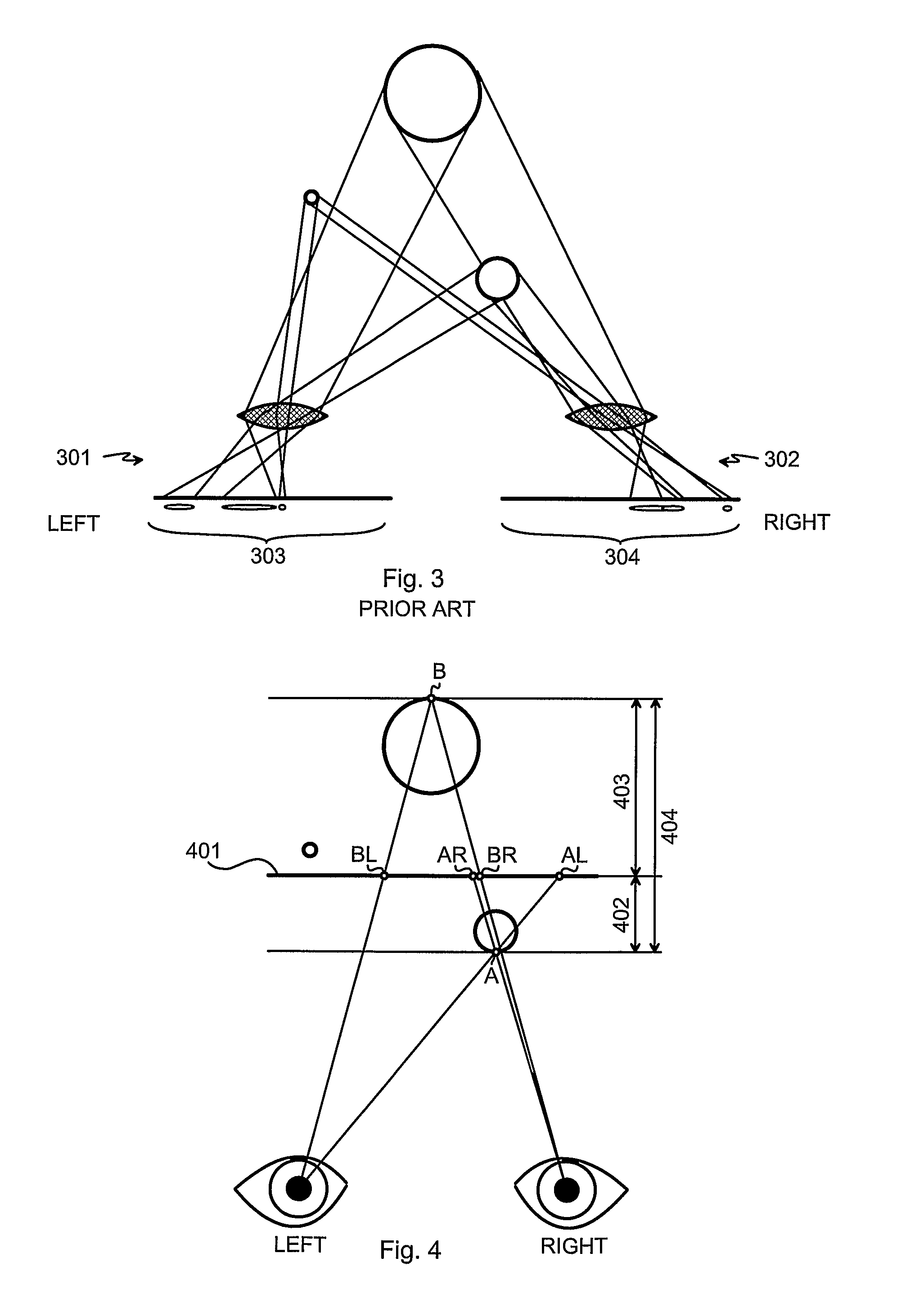Method and Devices for Generating, Transferring and Processing Three-Dimensional Image Data
a three-dimensional image and data technology, applied in the field of three-dimensional image data generation, transfer and processing, can solve the problems of not having a common standard that would define parameters, stereographic images taken with a certain imaging arrangement and prepared for presentation on a particular display type are not likely to work well, and simply changing between presentation formats does not solve problems
- Summary
- Abstract
- Description
- Claims
- Application Information
AI Technical Summary
Benefits of technology
Problems solved by technology
Method used
Image
Examples
Embodiment Construction
[0040]FIG. 4 illustrates schematically how the three-dimensional image taken in FIG. 3 could appear to a viewer on an autostereographic display screen 401. We assume for simplicity that the imaged objects are transparent bubbles. In order to correctly display point A in the image, the corresponding right-eye subpixel should appear at AR and the corresponding left-eye subpixel should appear at AL. Point A is the point of the imaged objects that was closest to the camera arrangement, so in the displayed image it appears closest to the viewer. In order to correctly display the most distant point B in the image, the corresponding right-eye and left-eye subpixels should appear at BR and BL respectively.
[0041]Point A appears to be virtually located at a distance 402 in front of the display screen 401, and point B appears to be virtually located at a distance 403 behind the display screen 401. How large are the distances 402 and 403 depends on the disparity between AR and AL as well as BR ...
PUM
 Login to View More
Login to View More Abstract
Description
Claims
Application Information
 Login to View More
Login to View More - R&D
- Intellectual Property
- Life Sciences
- Materials
- Tech Scout
- Unparalleled Data Quality
- Higher Quality Content
- 60% Fewer Hallucinations
Browse by: Latest US Patents, China's latest patents, Technical Efficacy Thesaurus, Application Domain, Technology Topic, Popular Technical Reports.
© 2025 PatSnap. All rights reserved.Legal|Privacy policy|Modern Slavery Act Transparency Statement|Sitemap|About US| Contact US: help@patsnap.com



